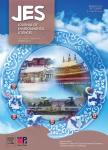Mercury remediation potential of a mercury resistant strain Sphingopyxis sp.SE2 isolated from contaminated soil
Mercury remediation potential of a mercury resistant strain Sphingopyxis sp.SE2 isolated from contaminated soil作者机构:Global Centre for Environmental Remediation(GCER)Cooperative Research Centre for Contamination Assessment and Remediation of the Environment(CRC-CARE)Faculty of Science and Information TechnologyThe University of NewcastleCallaghanNSW 9308Australia.
出 版 物:《Journal of Environmental Sciences》 (环境科学学报(英文版))
年 卷 期:2017年第29卷第1期
页 面:128-137页
核心收录:
学科分类:0830[工学-环境科学与工程(可授工学、理学、农学学位)] 07[理学] 0713[理学-生态学]
基 金:the University of Newcastle and CRCCARE for scholarship
主 题:Mercury resistance Sphingopyxis Mercury volatilization Mercury remediation Mercury reductase
摘 要:A mercury resistant bacterial strain SE2 was isolated from contaminated soil.The 16 s rRNA gene sequencing confirms the strain as Sphingopyxis belongs to the Sphingomonadaceae family of the α-Proteobacteria group.The isolate showed high resistance to mercury with estimated concentrations of Hg that caused 50%reduction in growth(EC_(50)) of 5.97 and 6.22 mg/L and minimum inhibitory concentrations(MICs) of 32.19 and 34.95 mg/L in minimal and rich media,respectively.The qualitative detection of volatilized mercury and the presence of mercuric reductase enzyme proved that the strain SE2 can potentially remediate mercury.ICP-QQQ-MS analysis of the remaining mercury in experimental broths indicated that a maximum of 44%mercury was volatilized within 6 hr by live SE2 culture.Furthermore a small quantity(23%) of mercury was accumulated in live cell pellets.While no volatilization was caused by dead cells,sorption of mercury was confirmed.The mercuric reductase gene merA was amplified and sequenced.Homology was observed among the amino acid sequences of mercuric reductase enzyme of different organisms from a-Proteobacteria and ascomycota groups,



